![]()
![]()
![]()
Use LEFT and RIGHT arrow keys to navigate between flashcards;
Use UP and DOWN arrow keys to flip the card;
H to show hint;
A reads text to speech;
23 Cards in this Set
- Front
- Back

|
"The Clock" Christian marclay -Took 3 years to put together -Direct reference to time by including an actual timepiece -Shows clips from movies where time is showing on a clock and creates a 24/hr movie -Shown at the Venice Biennale -Viewers will experience a sense of continual ‘nowness’ |
|
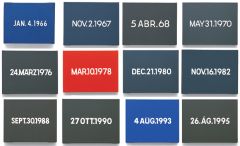
|
"Date Paintings" On Kawara |
|

|
"Louvre" Thomas Struth |
|
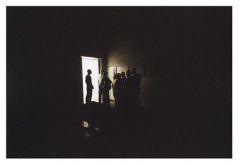
|
"work #127" Martin Creed -Making you feel aware of space and volume |
|
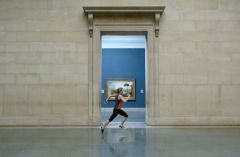
|
"no.850" Martin Creed -Why they run -Why can’t we run in museums -Shock value -Running opposite of death |
|
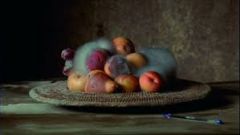
|
"Still Life" Sam Taylor Wood |
|
|
Barthes: ‘real’ author was the reader who brought work to lifeReception theory and Hans Robert Jauss: reader as negotiating with the textNicholas Bourriaud, Relational Aesthetics |
in an art context, reception theory refers to the way an audience actively decodes a work of art and helps to define and explore the meaning of the cultures we live in today |
|
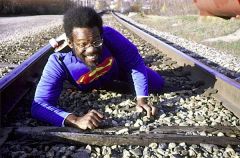
|
"The Great White Way" William Pope -Spirit of relational aesthetics (posing of an artist-constructed social experiences as art making/the goal of most relational aesthetics art is to create a social circumstance; the viewer experience of the constructed social environment becomes the art) -Trying to interact with people around -Social invisibility |
|
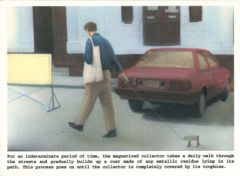
|
"The Collector" Francis Alys -A little dog-like object on rubber wheels, its body magnetized, that Alÿs led through the streets to pick up metallic bits and pieces as it went - Leftovers of the city in preference to the all-encompassing modernist rationalism |
|

|
"When Faith Moves Mountains" Francis Alys -"Maximum effort, minimal result.” The most apparently minimal change was effected, and only by means of the most massive of collective efforts. -Alÿs developed the idea after first visiting Lima in October 2000 -During the last months of the Fujimori dictatorship. Lima was in turmoil with clashes on the streets, obvious social tension and an emerging movement of resistance. |
|
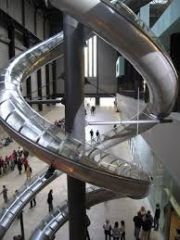
|
"Unilever Series" Carsten Holler -Installation in specific place -Described as an artist practicing relational aesthetics (slides and other works require participation and social reaction with others) -Why should slides only be for children/emergencies |
|
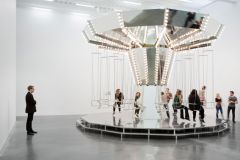
|
"Carousel" Carsten Holler |
|
|
Foucault and “The Archaeology of Knowledge”, 1969Freud’s House, London |
. |
|
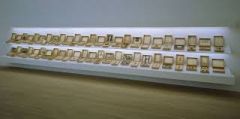
|
"From the Freud Museum" Susan Hiller -Two sides to a narrative -Originally trained as an anthropologist -Interested in the psychic traces of such materials, or the irrational memories, feelings and ideas they provoke. -Recurring focus in her work is involuntary memory- knowledge that comes from the unconscious or from altered states of consciousness, such as dreaming- and how we cope with suppressed memories when they resurface -Objects/images are displayed in archival storage boxes which have been left open, the boxes and labels imply a logical organization of the items but the contents of the boxes defy rational explanation. |
|
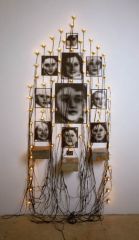
|
"Odessa Monument" Boltanski -For more than 5 decades Boltanski has employed methods of collage, assemblage and installation to create environments that provide a focus for feeling of loss, mourning and the erasure of memory. -Childhood assumes a vanitas role, representing temporality and an irrevocable loss reclaimed only by memory -Characteristically shown in semi darkness in museums and churches, these poignant works affect a haunting atmosphere and quasi-religious tone with their altar like design and incandescent light bulbs substituting for votive candles. -y work is about the fact of dying, but it’s not about the Holocaust itself.” |
|
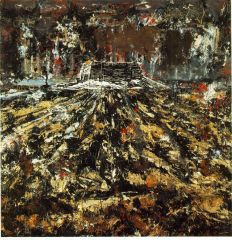
|
"To the Unknown Painter" Kiefer -Mobilize themes of history -Not precious - In the center is a bunker or tomb that recalls the site of Hitler's death. -The scorched landscape in this example is thrust forward, blasted, and marked with red paint as if it were burning. |
|

|
"Vietnam War Memorial" Maya Lin |
|
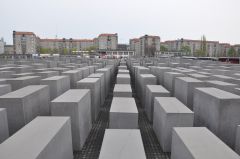
|
"Memorial to the Murdered Jews of Europe" Peter Eisenman -Mass regulated objects |
|

|
Monument Against Facism, War and Violence and for Peace and Human Rights. Jochen Gerz -Anyone can write whatever they want |
|
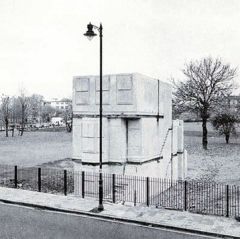
|
"House" Rachel Whiteread -Cast entire house -Community began to think about things around the house Temporary |
|
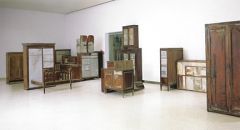
|
"La Casa Viuda" Doris Salcedo -Work about victims of violence -"The widowed house" |
|
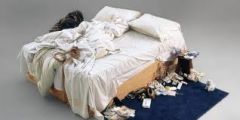
|
"My Bed" Tracey Emin -Controversial installation piece of Emin’s bed after a week of being so depressed she could not get out of bed -Makes people uncomfortable, sharing everything about her life and memory -Raped as a child |
|
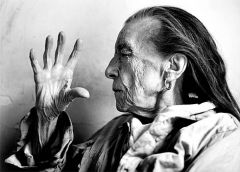
|
"Louise Bourgeois" Annie Leibovitz -Grew up in house with mother, father and fathers mistress (governess) -Looks at the uncanny -Parents made tapestries |

